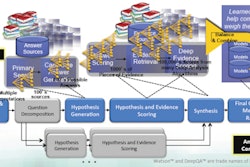
Dr. Farzad Mostashari, national coordinator of the U.S. Office of the National Coordinator for Health Information Technology (ONC), has jumped into the fray over whether the use of electronic medical records (EMRs) leads to more imaging use, as claimed by a study published in the March issue of Health Affairs.
The study -- based on a survey of almost 29,000 patient visits with 1,187 office-based physicians -- found that clinicians who had electronic access to radiology reports and images ordered more radiology exams than physicians who did not have such access.
The analysis, led by Dr. Danny McCormick of Harvard Medical School, examined findings from the 2008 National Ambulatory Medical Care Survey. The researchers determined that physicians using electronic records were twice as likely to order CT and MRI exams and 40% more likely to order any type of imaging exam.
The study immediately generated a buzz in the healthcare IT sector, which has touted the technology's potential for improved efficiency as a major reason for the massive investments that are currently under way, such as through the U.S. government's "meaningful use" program.
In the ONC's official blog, Health IT Buzz, Mostashari discussed the weaknesses of the study. His comments also open a Pandora's box of speculation about what he may think about imaging informatics.
Mostashari identified the following reasons why the study by McCormick and colleagues "ultimately tells us little about the ability of [electronic health records (EHRs)] to reduce costs, and why it tells us nothing about the impact of EHRs on improving care":
- The survey was conducted in 2008, before the passage of the Health Information Technology for Economic and Clinical Health (HITECH) Act and the national promotion of EMR adoption and its meaningful use.
- The study did not consider the use of clinical decision-support tools or software, or the use of health information exchanges (HIEs). Both have been shown in multiple studies to reduce unnecessary and duplicative tests, but they were not available in 2008.
- The study was not a randomized trial. It was an observational study not designed to address cost or associations between EHRs and quality.
- The study did not measure differences in the health of the patient population, the level of physician training, ownership of diagnostic modalities in nonradiology facilities that perform diagnostic imaging, and differences in approach to defensive medicine.
- The study did not consider whether the radiology exams ordered were medically necessary and whether the type of exam was clinically appropriate.
With respect to radiology, Mostashari stated the following:
- Health IT is designed to improve costs by improving coordination and quality of care, not by reducing test orders.
- The study is guilty of using association to suggest causality: "Ordering more tests may lead to buying an image viewing system, not the other way around," he wrote.
Mostashari also said that he was not particularly surprised by the authors' observation that referring physicians who have remote access to radiology images in their offices are more likely to order more imaging tests.
Mostashari's commentary can be read in its entirety by clicking here.



















